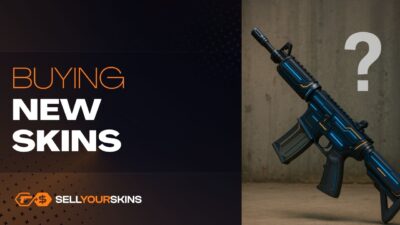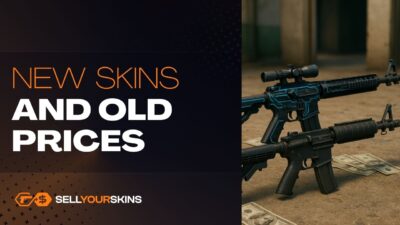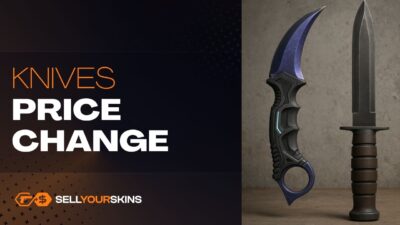Price drops are a natural part of the CS2 skin market. They affect both cheap items and top tier ones. When the price of your favorite skin starts to fall, it’s easy to panic – and in that moment, there’s no single “correct” way to react. Every choice comes with consequences, and the skin market, much like the crypto market, can be unpredictable. That’s why it’s worth knowing your available options and understanding what each of them involves.
Selling Immediately After Noticing the Drop
The most obvious solution is to sell the skin at the very beginning of the decline, before the price falls even further. This way, you can minimize your loss. It’s an “escape from a downward trend” strategy, often used by players who don’t want to risk losing a larger amount of money. The downside of this method is that selling at the bottom cuts off the chance of a rebound if the price quickly returns to previous levels. This happens regularly: the market reacts impulsively to updates, and after a few days or weeks, it stabilizes again. So if you sell too early, you might miss such a rebound.
Waiting for the Value to Recover
The second option is to stay calm and ride out the decline. Many skins, after brief turbulence, gradually return to their original price. This happens especially when the drop was triggered by a one off event, such as an update, a new case, or changes in trade-ups. The problem is that there is no guarantee of recovery. Some skins bounce back even higher than before, but others lose value permanently – especially when more visually appealing alternatives enter the market or when a given collection stops being desirable. This strategy requires patience and acceptance of risk.
Analyzing the Cause of the Decline
Before making a decision, take a moment to consider why the price is falling. If the reason is a major update, a trade-up change, or a new case with more attractive skins, the market may simply need time to stabilize after a sudden shift. However, if the decline results from a long-term trend – for example, decreasing popularity of a collection or the appearance of a cheaper alternative – then a return to the previous price becomes less likely. Understanding the reason behind the drop increases your chances of making a sensible decision, although it still doesn’t offer absolute certainty.
Holding a Skin “Long-Term” as an Investment
Sometimes the best solution is simply to keep the skin and treat it as a long-term asset. The CS2 market tends to reward items that become rare over time – especially when cases or collections are discontinued. Even if a skin temporarily drops in value, lower supply in the future may increase its price. This isn’t a strategy for the impatient – it requires time and resilience against short term declines. However, in the history of CS:GO and CS2, many skins have regained – and even multiplied – their former value after years of stagnation.
When Is It Better to Do Nothing?
There are situations where the best move is… no move at all. If the drop is minor and the skin isn’t very valuable, there’s no point in reacting nervously. The market often fluctuates in short intervals, and small changes don’t matter much. Waiting for stabilization can be the best option when you’re not aiming for quick profit or immediate cash-out.
There is no single correct reaction to a skin’s price drop. You can sell quickly to limit losses, you can wait and hope for a rebound, or you can treat the skin as a long term investment. Every decision carries risk, because the CS2 market offers no guarantees – just like in the world of cryptocurrencies, valuations sometimes move irrationally. The most important thing is to stay calm, understand the cause of the drop, and choose a strategy that matches your own risk tolerance.



